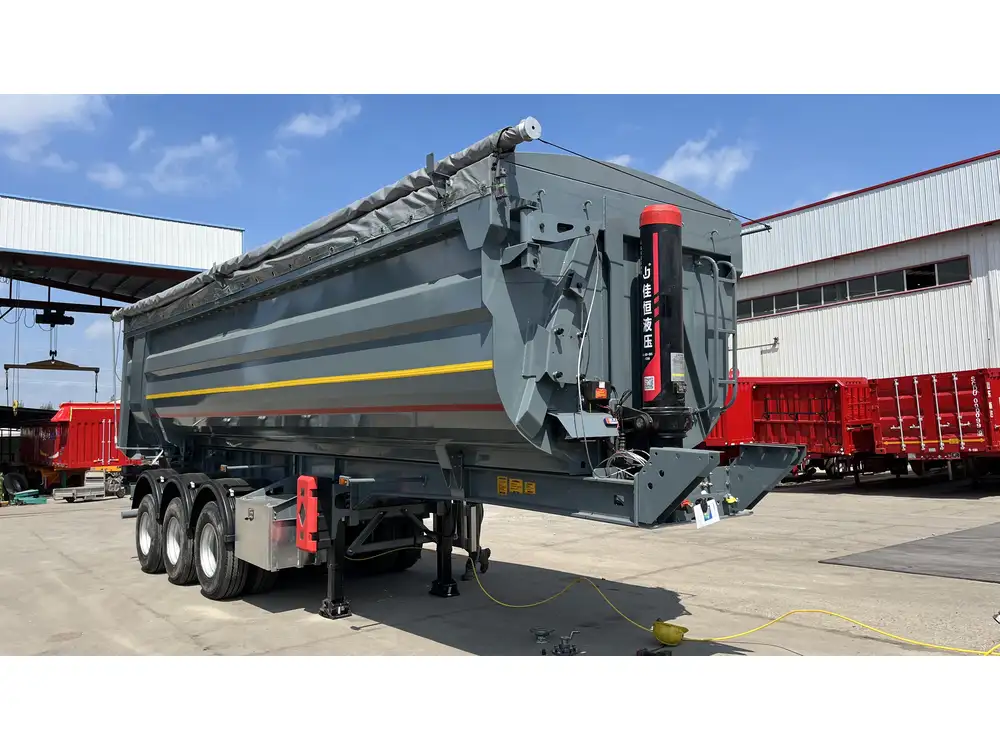Efficient weight distribution on semi-trailers is not just a matter of compliance with regulations; it is a quintessential aspect of ensuring safety, stability, and optimal performance on the road. A well-balanced load can prevent a host of issues, from tire wear to accidents. In this detailed exploration, we will delve into the complexities of weight distribution on semi-trailers, presenting methods, regulations, and tips necessary for manufacturers, drivers, and fleet managers alike.
Understanding Weight Distribution
Weight distribution refers to how weight is spread out over the axles of a trailer. A balanced distribution is essential for numerous reasons:
- Safety: Uneven weight can lead to tire blowouts and loss of vehicle control.
- Fuel Efficiency: A well-distributed load can improve fuel economy.
- Longevity of Equipment: Proper weight distribution minimizes excessive wear and tear on components.
Key Terminology in Weight Distribution
Before detailing the methods to achieve optimal weight distribution, let’s clarify some key terms:
| Term | Definition |
|---|---|
| Gross Vehicle Weight Rating (GVWR) | The maximum operating weight of a vehicle as specified by the manufacturer. |
| Payload Capacity | The maximum weight a trailer can carry, excluding its own weight. |
| Axle Weight | The weight supported by a single axle on the trailer. |
| Center of Gravity (CG) | The point where the total weight of the trailer is concentrated, impacting handling and stability. |

The Importance of Axle Weights
Understanding axle weights is vital. Federal regulations dictate the maximum allowable weights for each axle, commonly referred to as bridge laws. Here’s how they work:
- Single axle: Maximum weight typically around 20,000 lbs.
- Tandem axle: Often capped at 34,000 lbs.
- Tridem axle: Can accommodate up to 42,000 lbs.
Compliance with Regulations
Failure to comply with these regulations can lead to:
- Fines: Heavy penalties for exceeding weight limits.
- Increased wear: Overloaded axles can suffer damage, leading to expensive repairs.
- Safety risks: Improper weight can lead to dangerous handling conditions.
Guidelines for Effective Weight Distribution

1. Load Placement
The initial step in effective weight distribution is strategic load placement:
- Distributing Load Evenly: Place heavier items over the axles. As a rule of thumb, at least 60% of the load should be positioned towards the front of the trailer.
- Utilizing Vertical Space: Layering cargo can help distribute weight more evenly across the trailer.
2. Use of Load Bars and Straps
Employing load bars and straps can help secure the load in place, preventing it from shifting during transit. A well-secured load is less likely to cause weight imbalances.
3. Center of Gravity Adjustment
To manage the trailer’s center of gravity effectively:
- Keep Heavy Items Low: Heavy items should be placed closer to the trailer floor. This lowers the overall center of gravity, enhancing stability.
- Avoid High Stacking: While it may be tempting to stack cargo high for capacity, this raises the center of gravity, increasing the risk of tipping.

4. Weighing the Trailer
Weighing the trailer after loading is crucial for confirming appropriate weight distribution. Here’s how to do it effectively:
- Use a Portable Scale: This can be placed underneath the trailer at each axle.
- Check Weights Against Limits: Compare the weights to allowed regulations for each axle.
- Adjust Load as Needed: If excess weight is detected, redistribute cargo accordingly.
Advanced Techniques for Complex Loads
For semi-trailers hauling complex or varying loads, such as bulk materials or containers, consider these advanced techniques:
1. Weight Distribution Hitches
These are handy devices fitted between the truck and the trailer, helping distribute weight across the tow vehicle’s axles more evenly.

2. Load Cells and Sensors
Incorporating load cells and sensors can provide real-time data on weight distribution, allowing for mid-journey adjustments if necessary.
3. Electronic Stability Control Systems
Modern trailers often come equipped with electronic stability systems that automatically detect and adjust the braking pressure at each axle to maintain stability during difficult maneuvers.
Troubleshooting Weight Distribution Issues
Even with the best practices, weight distribution issues may still arise. Here are common symptoms and their remedies:
| Symptom | Possible Cause | Solution |
|---|---|---|
| Tire Wear on One Side | Uneven load distribution | Inspect and redistribute weight. |
| Trailer Swaying | Excessive weight on axles | Test and redistribute to achieve balance. |
| Difficulty Steering | High center of gravity due to improper load stacking | Lower CG by optimizing cargo placement. |

Regular Maintenance and Inspections
Regular inspections of tires, brakes, and suspension systems can alert operators to signs of uneven weight distribution. Additionally, tire pressure should always be checked to ensure stability, as under-inflated tires can exacerbate handling issues.
Contribution of Technology
In today’s world, technology plays a significant role in achieving and maintaining optimal weight distribution. Below are some technology implementations that can enhance performance:
1. Fleet Management Software
Fleet management solutions enable operators to monitor vehicle weights, GPS locations, and load distributions dynamically, allowing for proactive adjustments and better management of logistics.

2. Load Optimization Software
Advanced software applications can assist transport companies in planning and optimizing loads before departure, ensuring that weight distribution meets compliance standards.
Conclusion: Mastering Weight Distribution for Semi-Trailers
In summary, mastering weight distribution on a semi-trailer is a multifaceted task that requires attention to detail and a proactive approach. By understanding the intricacies of weight distribution, employing advanced techniques, and leveraging technology, manufacturers and operators can ensure that they remain compliant, safe, and efficient.
With proper weight distribution:
- Safety is guaranteed.
- Regulatory compliance is achieved.
- Equipment longevity is enhanced.
Implement these strategies, from load placement and weighing to utilizing modern technology, and you’ll find yourself driving toward a more efficient transport solution. Whether you are an experienced fleet manager or a new operator, the road to safe and effective weight distribution starts here — with knowledge, precision, and consistent practice.



